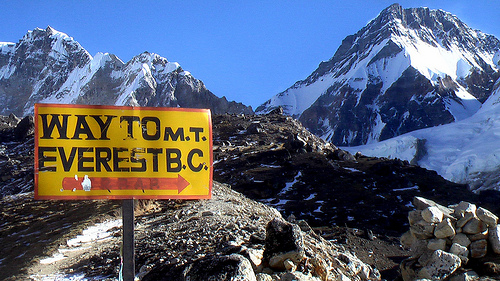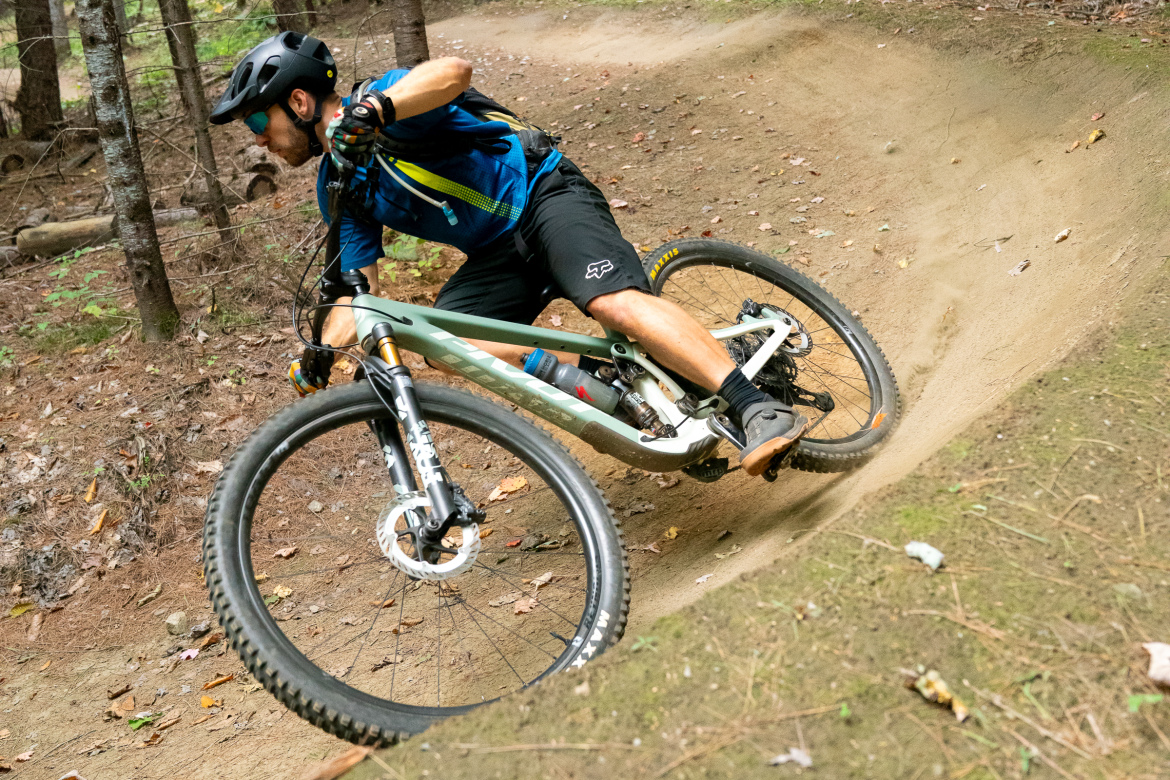PROTECT YOUR DNA WITH QUANTUM TECHNOLOGY
Orgo-Life the new way to the future Advertising by Adpathway
The MSR Evo Trail is a rugged, no-nonsense snowshoe designed for hikers who value durability and value. It’s been around for years with an almost cult following among snowshoers and winter hikers, and for good reason: it’s tough, simple, and performs well across a wide range of conditions without breaking the bank. Priced at $169.95 (now $127.39 at REI and MSR), they are a best buy that compares very favorably to other recreational snowshoes and even MSR’s more expensive models.
- Length: 22″
- Weight: 3 lbs 10 oz
- Gender: Unisex
- Traction: Toe crampon and steel side rails (2)
- Binding: Paraglide (glove-friendly)
- Materials: Molded plastic
- Pros: Indestructible, great traction, works with a wide range of footwear, relatively inexpensive
- Cons: Less flotation on powder
Build and Materials
 The Evo Trail has the same front crampon and side traction rails as the more expensive MSR Evo Ascent snowshoe.
The Evo Trail has the same front crampon and side traction rails as the more expensive MSR Evo Ascent snowshoe.The Evo Trail uses a unibody molded plastic deck rather than a traditional aluminum frame with synthetic decking. This design choice has big advantages. The plastic deck is nearly bombproof. You can bash these through crust, brush, and rocky sections without a second thought. At 3 lb 10 oz/pair, the weight is reasonable and distributed in a way that feels solid underfoot.
Underneath, the Evo Trail features steel traction rails and toe crampons that bite impressively on packed snow and icier surfaces. The rails run along the length of the deck, adding confidence when traversing side slopes. They deliver more grip than most recreational snowshoes, especially in mixed conditions where a gentle trail can turn into frozen hardpack or glazed wind crust. It’s worth noting that the Evo Trail’s steel traction rails and toe crampons are identical to those on the more expensive MSR Evo Trail Ascent: the main difference between the two snowshoes is that the Evo Trail Ascent has a televator heel lift and a different binding that can accommodate higher-volume boots.
Binding System
 The Paraglide binding system positions your shoes are the optimal location for maximum traction, regardless of your footwear.
The Paraglide binding system positions your shoes are the optimal location for maximum traction, regardless of your footwear.MSR’s Paraglide binding on the Evo Trail is a standout for ease of use. It’s a two-strap system that accommodates a wide range of footwear, including bulkier insulated boots, and cinches quickly with glove-friendly buckles. Step in, pull the straps, and you’re secure. Stepping out is just as simple, which matters when you’re adjusting layers or transitioning at trailheads in freezing temps.
The binding holds the foot comfortably without pressure points, and it sheds snow fairly well. The pivot is a simple rotating toe piece that allows a natural stride. It’s smooth enough to avoid the “clunky” feeling common with entry-level snowshoes. It’s effectively identical to MSR’s more expensive snowshoes, making it a great value.
The snowshoes are handed and labelled with “L” and “R” so you know which one to put your foot in. This positions the binding controls on the outside of your boots, so they don’t interfere with your stride. The ball of your foot is also positioned exactly where it should be over the front crampon for maximum comfort and effectiveness, which is a great benefit of the Paraglide binding system.
Flotation and Extensions
On their own, the Evo Trail offers decent flotation for day hikes on packed trails and moderate powder. The deck length is relatively short, enhancing maneuverability in tight woods and on uneven terrain. In deeper snow or when carrying a heavier pack, you’ll want to switch to longer snowshoes that have more surface area. While you can extend their length with 6″ modular flotation trails, no one likes using them, and they’re quickly discarded.
 The Paraglide binding is remarkably easy to use and glove-friendly with locking roll tabs and quick-release knobs
The Paraglide binding is remarkably easy to use and glove-friendly with locking roll tabs and quick-release knobsTraction and Terrain Performance
Traction is one of the Evo Trail’s strongest points. On packed trails, they feel planted and secure. The steel rails give confidence while sidehilling, and the toe crampon bites as you climb. On icy sections, you’ll still want cautious footwork and to plant the crampons more firmly, but the Evo Trail inspires trust.
There’s no heel lift (also called a televator) on the Evo Trail, which is a feature found on mountaineering snowshoes like the MSR Evo Ascent, which has the same decking and crampons as the Evo Trail but with a different binding. Televators, also on the Evo Ascent, reduce calf strain on steep climbs, but if you’re not climbing a few thousand feet at a time, you won’t miss them. For rolling terrain and typical winter hikes, the lack of televators is not a dealbreaker, but it’s one area where MSR’s higher-end models (like the MSR Lightning Ascent or Revo Ascent) have an advantage.
Durability and Maintenance
Durability is outstanding. The plastic deck shrugs off abuse, the steel rails hold up to hard use, and the bindings resist cracking in cold weather. There are few moving parts to fail, and maintenance is minimal: rinse off salt, dry them, and store. If a strap ever wears out or a binding pin breaks, MSR’s replacement parts are easy to source, and the modular design makes field repairs straightforward.
Comfort and Fit
The Evo Trail’s stride feels natural for most users. The shorter deck length makes stepping over obstacles and turning around on narrow trails easier. The binding accommodates a wide range of boots without fuss, which is helpful if you switch footwear depending on the temperature or activities. I’m a 180 lb man, and I find the length perfectly suitable for snowshoeing across a wide range of conditions, though you might want a 25″ or 30″ snowshoe with more length and surface area if you snowshoe in very deep powder.
Comparison Table
Weight and Packability
The Evo Trail snowshoes are compact and reasonably light, making them easy to strap to a pack. They’re not ultralight, but in the recreational category, they’re competitive, and the extra robustness is worth the slight trade-off for most hikers.
Who It’s For
- Hikers who primarily use packed or mixed winter trails and occasionally encounter icy sections.
- Anyone who values durability and simple, glove-friendly bindings.
- People who don’t need a heel lift for steep alpine routes.
Recommendation
The MSR Evo Trail is a rugged, versatile snowshoe that prioritizes traction, simplicity, and longevity. It excels on packed trails and holds its own in variable conditions. If you can live without a heel lift and want a snowshoe that you won’t have to baby, the Evo Trail is a dependable choice that’s easy to recommend.
Disclosure: MSR donated snowshoes for review.
SectionHiker never accepts payment for gear reviews or editorial coverage. When you buy through affiliate links on our site, we may earn a small commission at no extra cost to you. Help us continue to test and write unsponsored and independent gear reviews, hiking and backpacking FAQs, and free hiking guides.



















 English (US) ·
English (US) ·  French (CA) ·
French (CA) ·